How To Dominate Local SEO Without a Physical Address
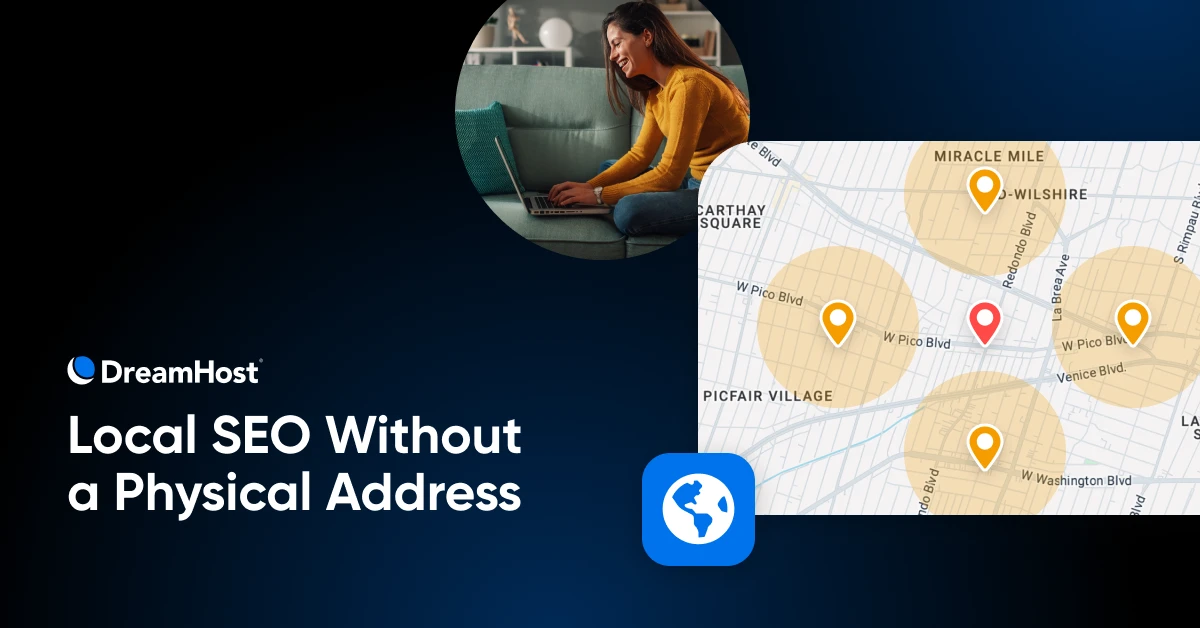
In 2024, 80% of consumers searched local businesses online before making a purchase. And every month, Google US processes 870 million searches of over 6.3 million “near me” keywords.
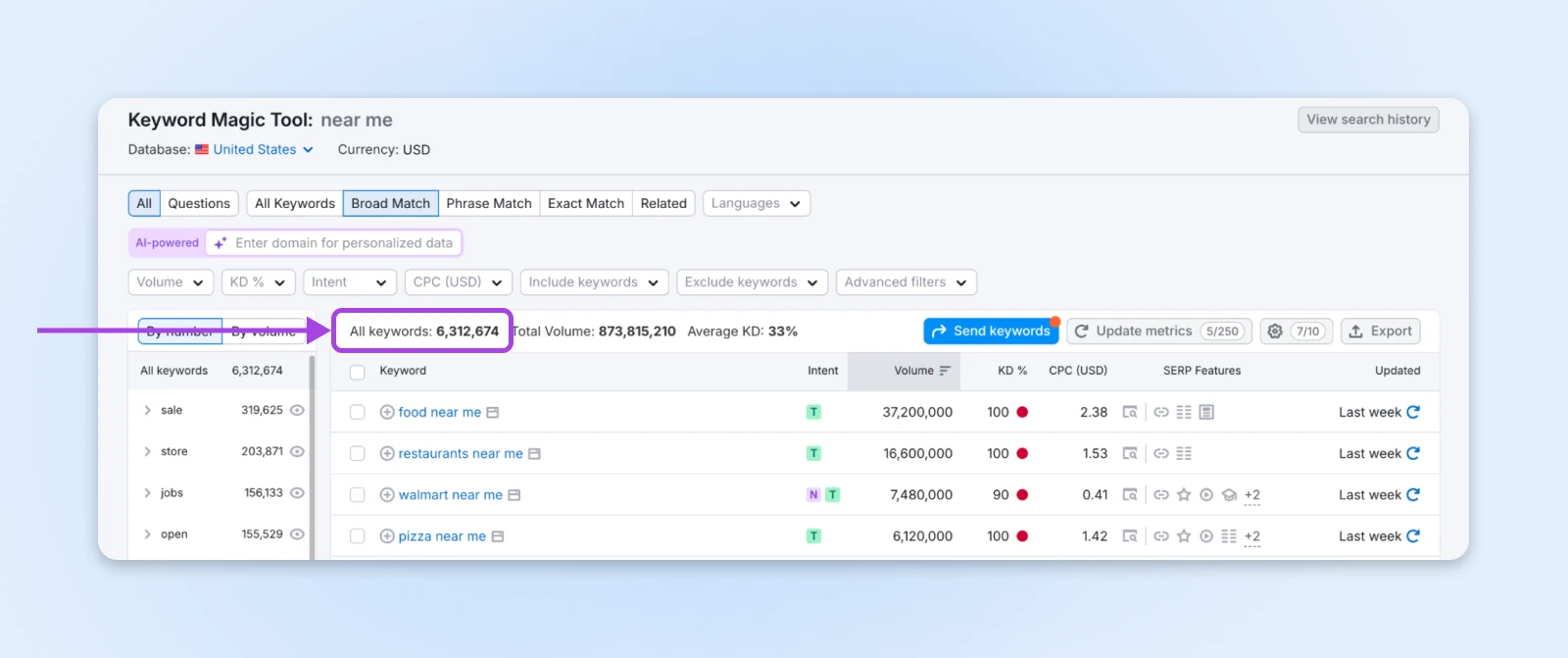
You may be wondering: “Can I even compete here without a storefront?”
We’ve got good news — you absolutely can!
These days, Google isn’t just looking for brick-and-mortar locations to show on their local pack. It also shows the most relevant service providers around.
Customers look for services that come to them, and Google’s algorithm serves that.
The mobile dog groomer who bathes pets in their own home. The house cleaner who arrives with supplies in hand. The IT consultant who solves problems remotely. All of these services can be catered without an address.
There’s a persistent myth, however, that keeps small service businesses benefiting from local SEO: the belief that without a physical storefront, you can’t compete in local search results.
This local SEO guide dismantles the myth.
Drawing from learnings across service-area businesses, we’ll go over the exact framework that will allow you to dominate local SEO without a physical address.
The New Local SEO Situation
The traditional method of local SEO focused heavily on physical proximity.
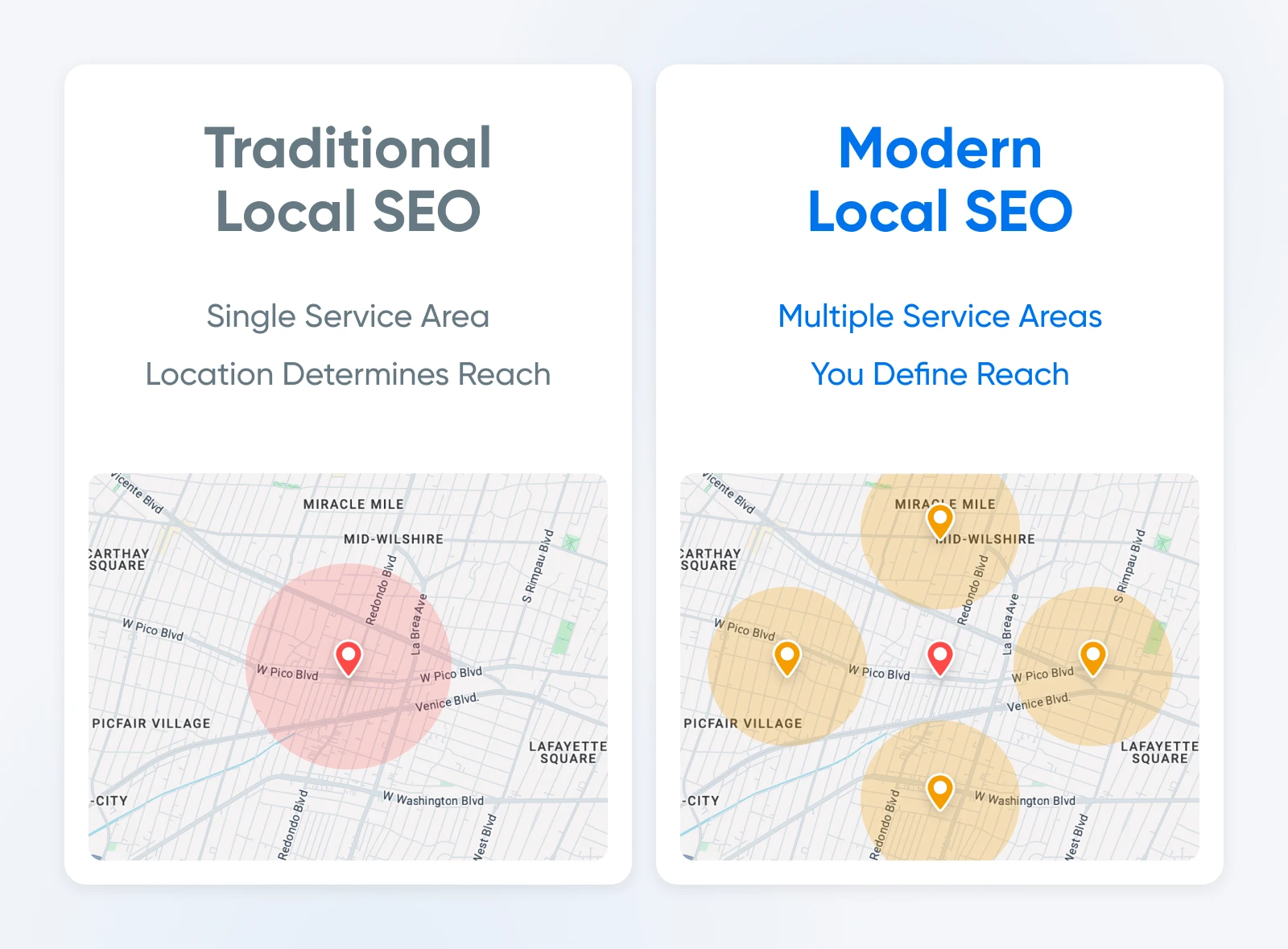
The business closest to the searcher often won the top position. This created an inherent disadvantage for businesses without customer-facing locations. But Google’s algorithm has evolved since then.
There are three key shifts creating new opportunities:
1. From “Proximity” to “Relevance and Reliability”
Google’s local algorithm now weighs three primary factors:
- Relevance (how well your business matches the search)
- Prominence (your overall online reputation)
- Proximity (physical distance from the searcher)
For businesses without physical locations, this means proximity is just one factor among many.
And often it’s not the deciding one. In fact, for service-area searches, Google prioritizes businesses that explicitly define service areas over those that simply have a nearby address as that helps users be absolutely certain a business would be able to service them.
2. The Rise of Intent-Based Search
76% of people who search for something nearby on their smartphone visit a related business within 24 hours, and 28% of these searches result in a purchase.
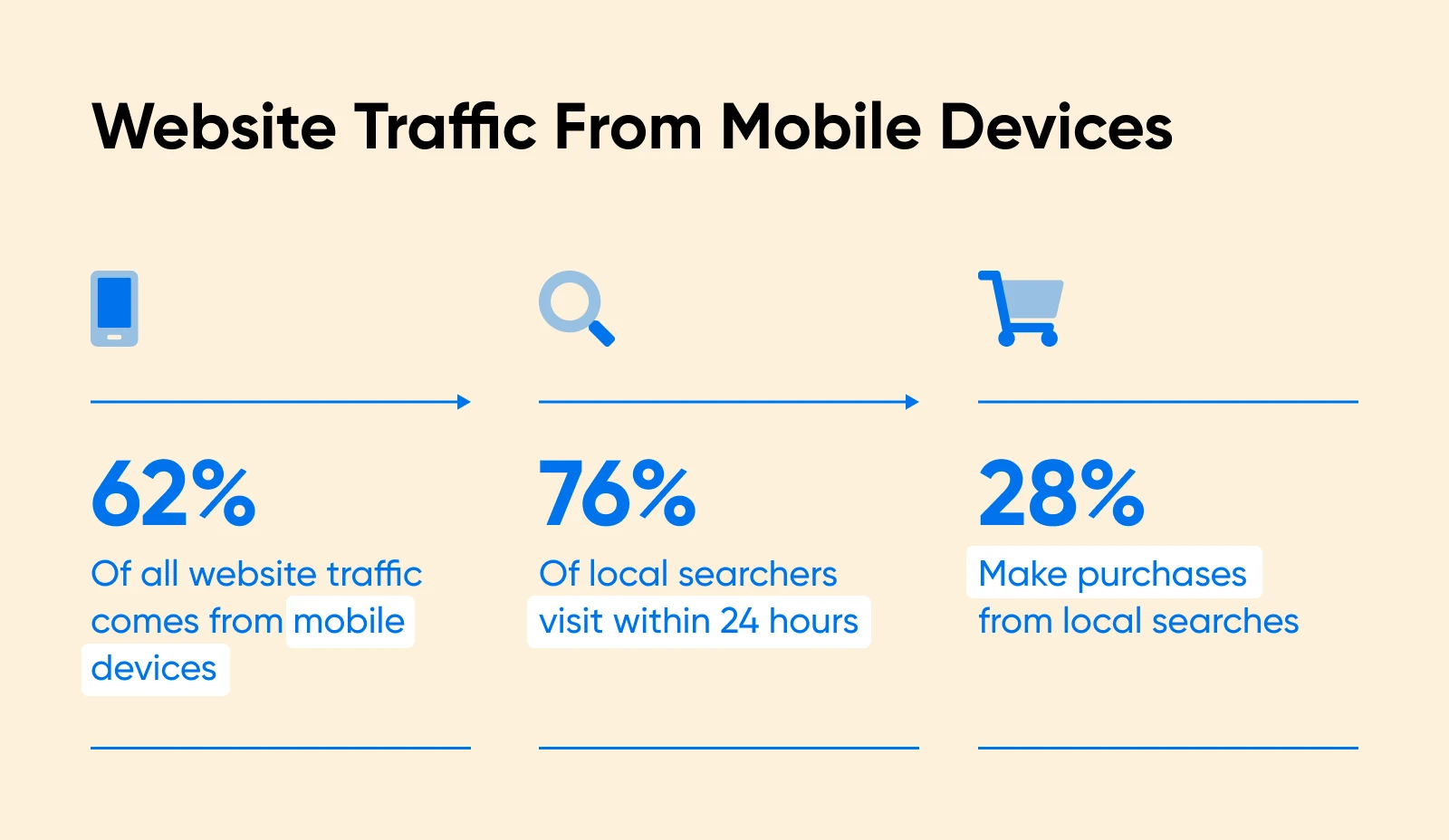
This represents a fundamental shift in how people’s buying patterns have changed over time even for local businesses.
3. Mobile Search Dominance
With 61.85% of all website traffic now coming from mobile devices and Google automatically personalizing results based on mobile location, the “near me” search has become the default behavior for finding services nearby.
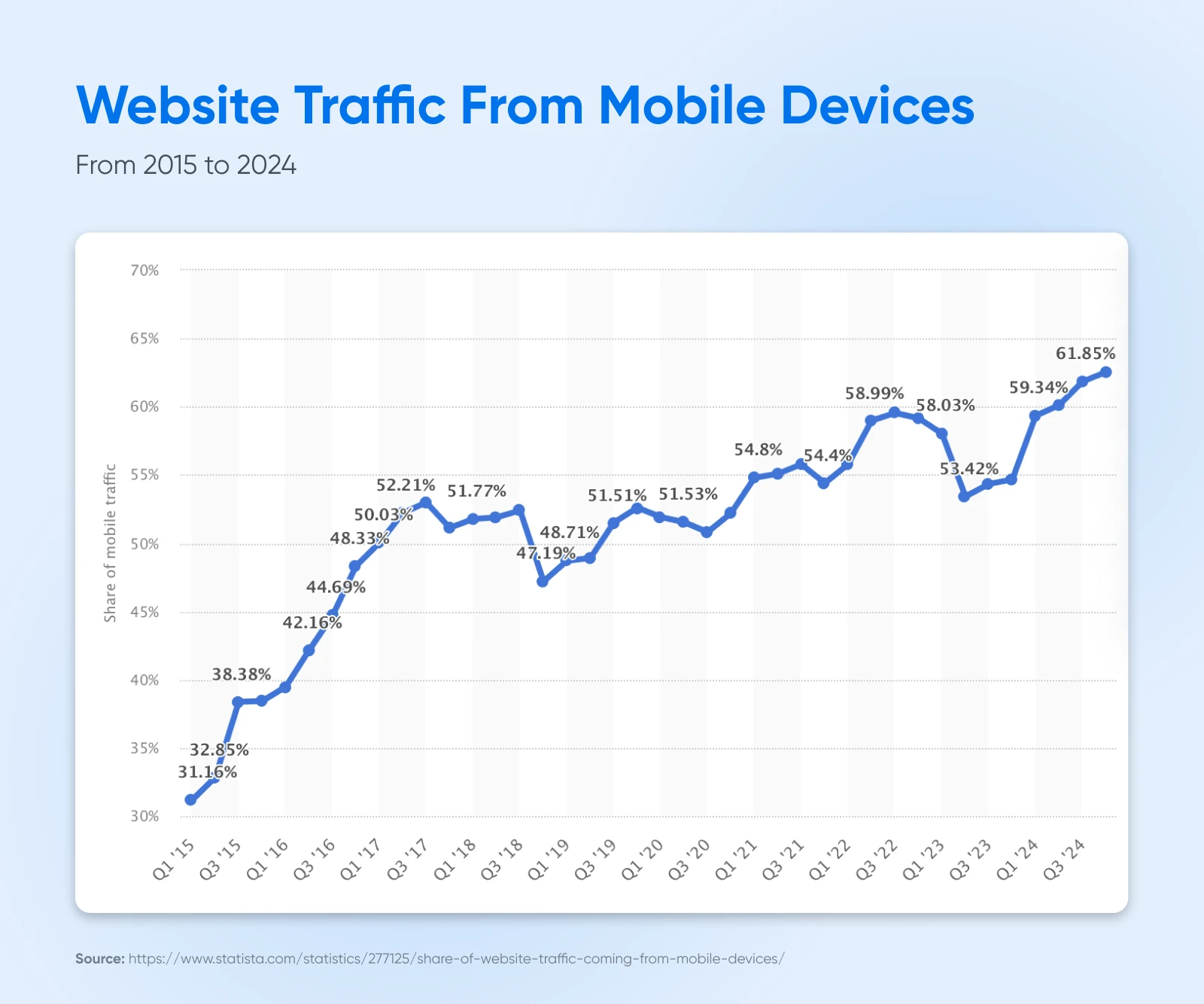
This shift benefits service-area businesses because mobile searchers are looking for convenience and availability rather than physical proximity alone.
These three algorithm and behavior shifts have created a new playing field — one where service-area businesses can compete effectively. So, how can make the most out of this shift?
Step 1: Optimize Google Business Profile as a Service-Area Business
Your Google Business Profile is the foundation of your local search presence. And optimizing this correctly makes a critical difference especially for service businesses without a physical address.
Set Up Verification Without Exposing Your Address
You need to provide a real physical address during verification. Your home address should be fine if you don’t have a business address. Google sends a postcard with a verification code to this address before making the listing live.
Note: Virtual office addresses or PO boxes are explicitly prohibited and Google may suspend your listing if detected.
After verification, you can (and should) hide your address from public view.
From your Google Business Profile dashboard:
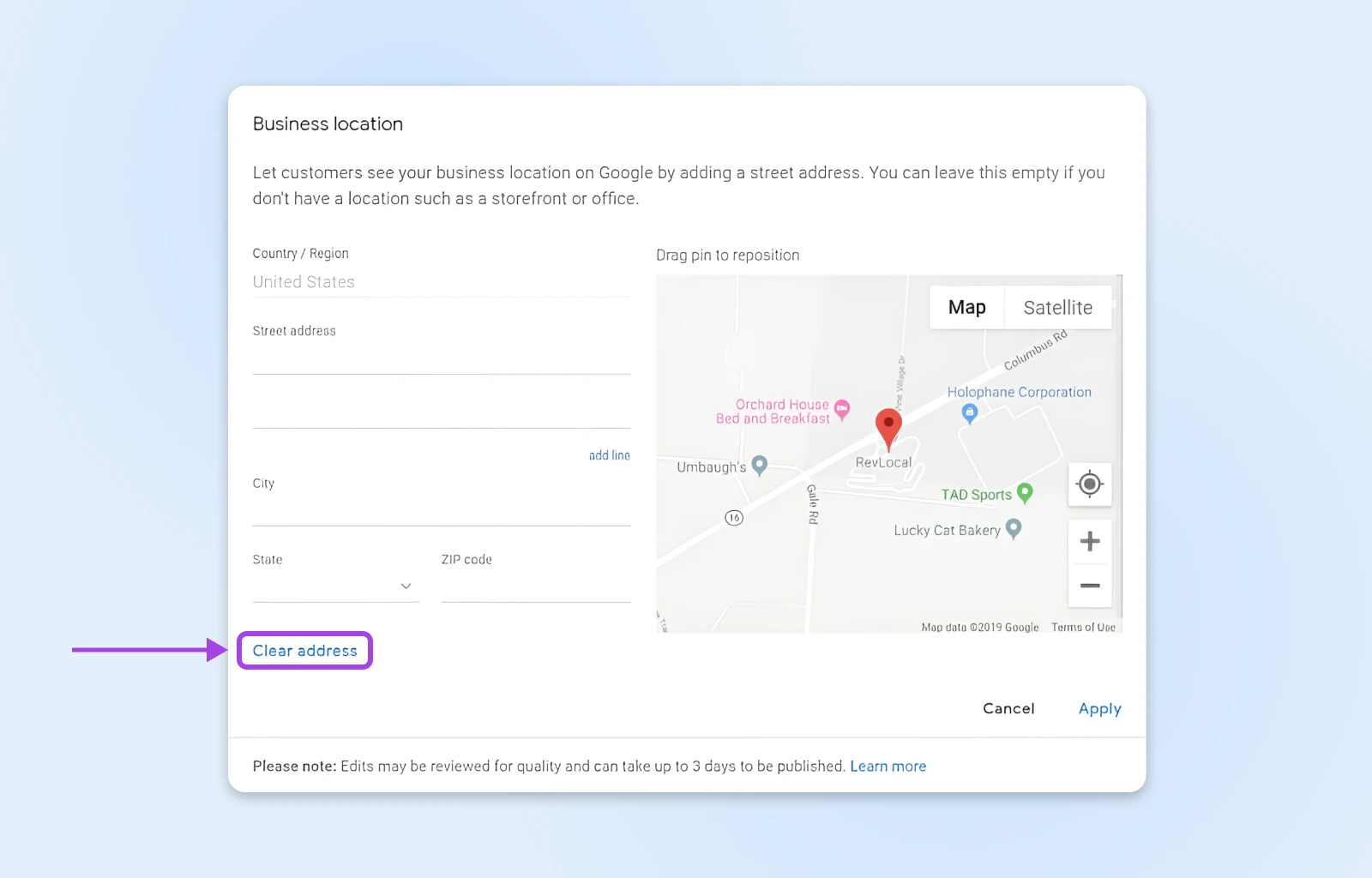
This keeps your address private while also giving you access to the benefits of having a Google Business profile.
Define Your Service Areas Strategically
After the physical address has been cleared, you need to add the service areas where your business operates.

You can add up to 20 cities, zip codes, or neighborhoods. Note that you can come back and edit this information later to add new locations any time the business expands.
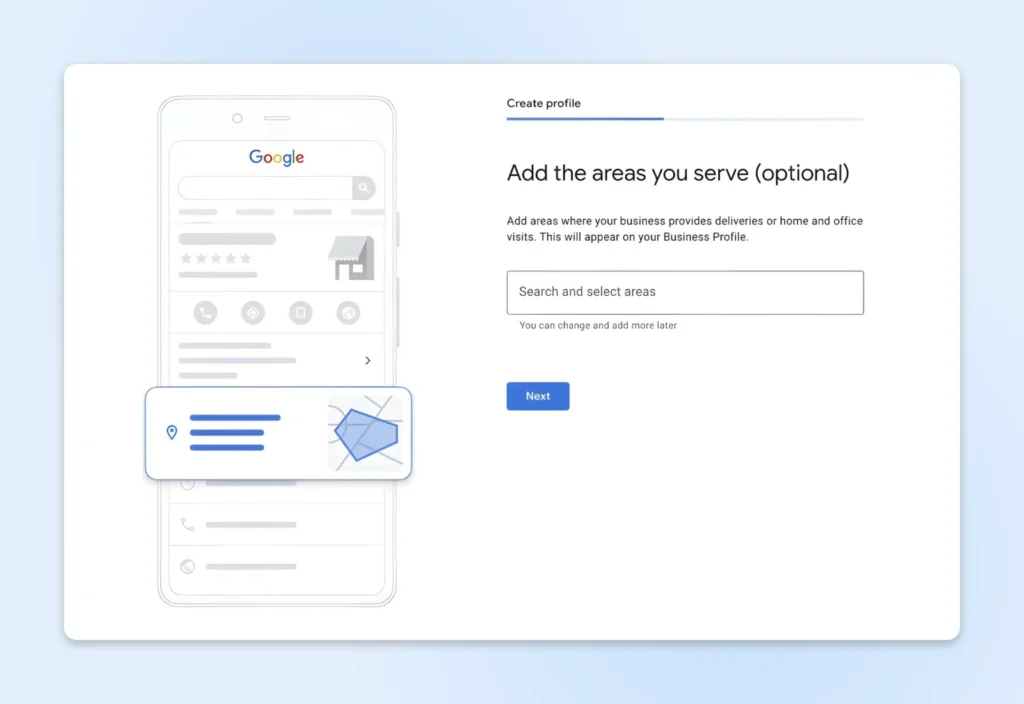
Remember to focus on areas where you actually provide services regularly and effectively. Once done, start adding the services you provide.
Google allows one primary category and up to nine additional categories. Your primary category carries significant ranking weight, so select the one that most accurately represents your core business.
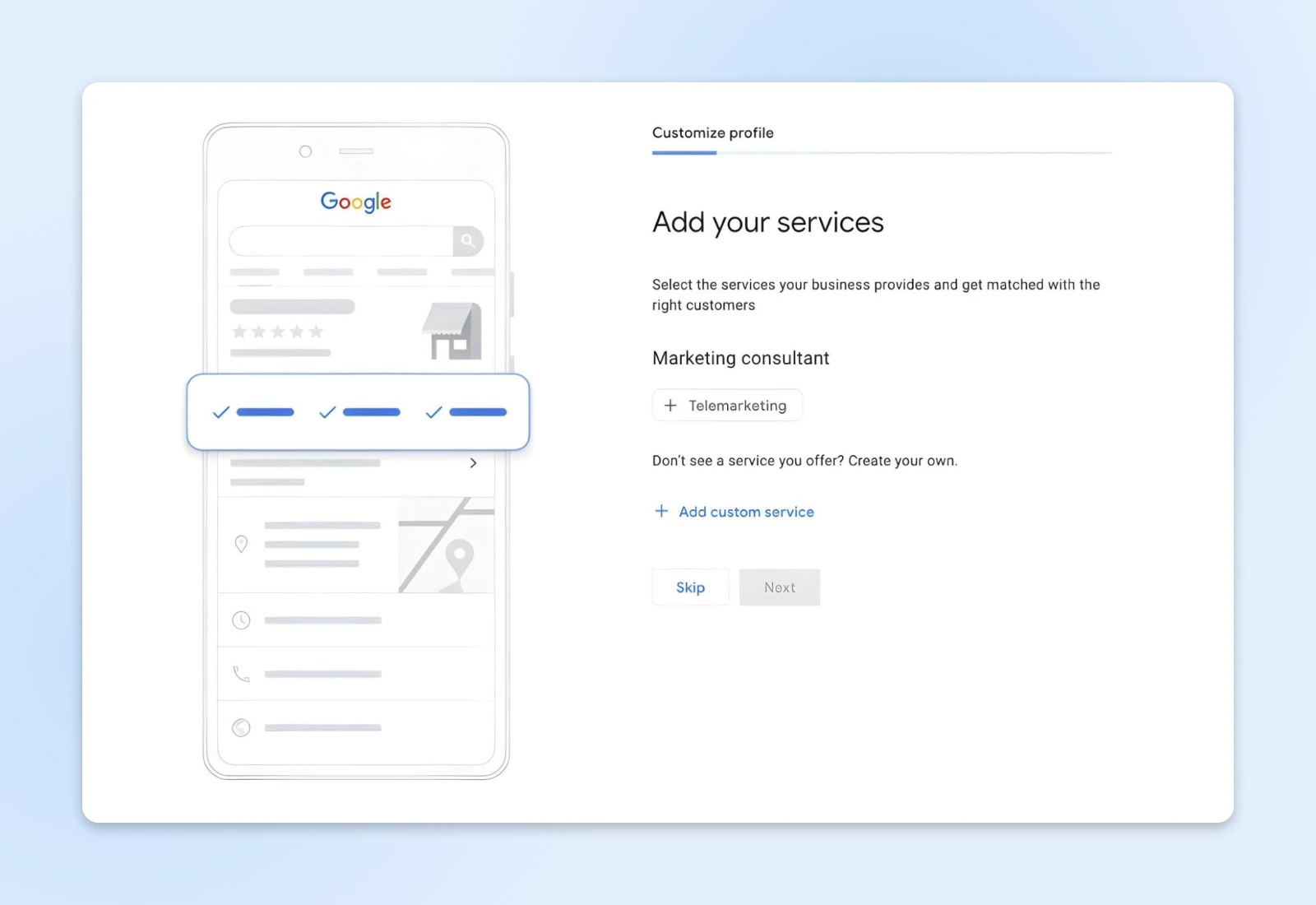
Add photos that showcase your team, your work (with permission from clients), and your service vehicles, if any, to give more authenticity to your business profile. These visuals help potential customers connect with your business and build trust when they can’t visit a physical location.
Step 2: Create Location-Specific Content That Ranks
Keywords are the foundation of your local SEO efforts. Without a physical address, your keyword strategy becomes even more critical for connecting with local customers.
Identify Location-Based Keywords
Start by brainstorming the core services you offer and the specific geographic areas you serve. Then use keyword research tools like Google Keyword Planner, Semrush, or Moz Keyword Explorer to uncover valuable local keywords.
Also, create a dedicated page for each service area you cover. These pages should:
- Address specific needs and challenges of that particular location.
- Include neighborhood-specific case studies (with client permission).
- Offer service guarantees or policies relevant to that area.
- Provide location-specific contact information.
Each page should have its own URL structure (“yourwebsite.com/areas-served/location-name”) and unique content that’s tailored toward that location.
Focus on Long-Tail Keywords With Location Modifiers
For service area businesses, long-tail keywords with specific location modifiers are particularly valuable.
To put it in perspective, if you’re a plumbing business, instead of targeting generic terms like “plumber,” focus on phrases like “emergency plumber in Islington” or “24-hour plumbing services near Richmond.”
These longer, more specific phrases often indicate a higher intent to use a service and can attract highly qualified local traffic.
A well-executed keyword research strategy is essential for identifying these opportunities.
Incorporate Keywords Into Your Website
Once you’ve identified your target keywords, strategically incorporate them throughout your website with the following:
With 54% of all organic clicks going to the top three search results, creating content that ranks well is key. For service-area businesses, your website content must provide clear signals about where you offer services.
Service Area Pages That Convert
Create a dedicated page for each service area you cover. These pages should:
- Address specific needs and challenges of that particular location.
- Include neighborhood-specific case studies (with client permission).
- Offer service guarantees or policies relevant to that area.
- Provide location-specific contact information.
Top Tip: Avoid simply duplicating the same content across multiple location pages with just the place name changed. Google recognizes and penalizes this practice.
Step 3: Get More Reviews
Over 50% of consumers are putting their trust in online reviews first, outweighing the opinions of friends and family (24%), company claims (18%), social media influencers (2%), and media reviews (2%).
The same survey reports that Gen Z places even more emphasis on online reviews, with 76% rating them as the second most important factor behind product quality.
To make sure you’re not missing out on this opportunity, you need a systematic approach to collecting reviews after completing services.
Your review requests should:
- Thank customers for their business.
- Remind them of the specific service provided.
- Explain how reviews help small businesses.
- Provide a direct link to leave feedback.
As a bonus, you should encourage customers to mention their neighborhood or area in their reviews. These location mentions reinforce your relevance for those areas in Google’s algorithm.
Once people add their reviews, make it a point to respond thoughtfully to every review, both positive and negative ones.
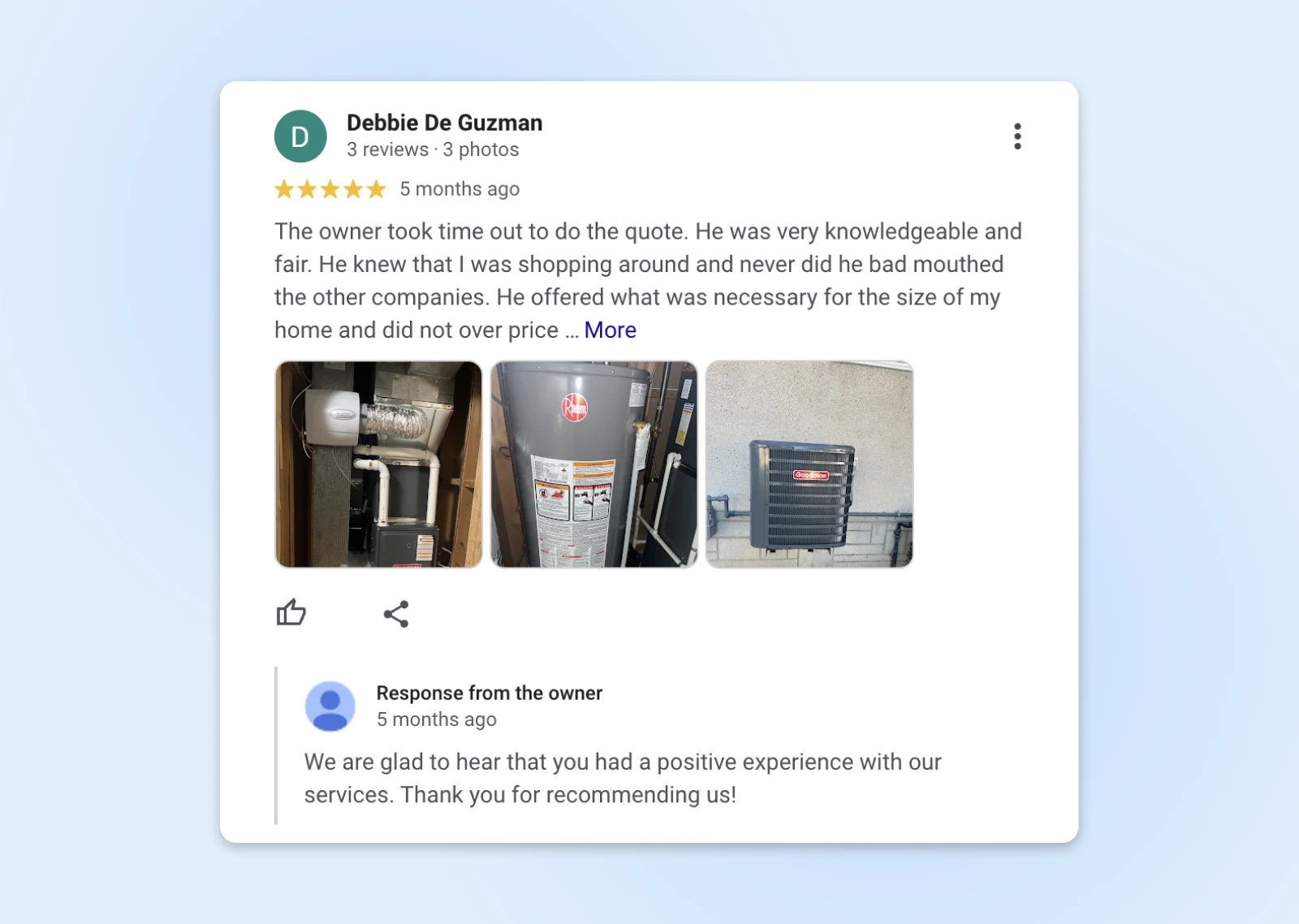
To make the reviews more impactful, include phrases like “We’re always happy to serve clients in [neighborhood]” or “Thank you for trusting us with your electrical needs in [area].”
These responses serve dual purposes – they show potential customers that you’re engaged and responsive, and they provide additional location signals to Google.
Step 4: Establish Local Citations and Online Presence
Citations — mentions of your business information on other websites — play an important role in local SEO, even without a physical address.
Strategic Directory Listings
Beyond Google Business Profile, register your business on platforms like:
- Bing Places for Business
- Apple Maps
- Yelp
- Facebook Business
- Nextdoor Business
- Industry-specific directories where your competitors are listed
Do note that some directories allow service-area businesses to hide their address. But if a platform requires your physical address to be listed, you need to weigh the SEO benefits and choose to follow their rules or skip adding to that directory.
Maintain NAP Consistency
For best results, you need to keep your Name, Address, and Phone number identical across all listings.
- Keep your business name and phone number 100% consistent.
- Use identical service area descriptions across platforms.
- Add “Service Area Business” or “We come to you” wherever possible so people aren’t confused.
This may seem obvious as you’re reading through, but when we provide SEO services to our clients, we’ve noticed a lot of businesses add different phone numbers to handle different locations.
This may help organize your business better, but in Google’s eyes (the algorithm), it adds inconsistency to your listings.
Instead, if you want to separate phone calls from different locations, invest in an 1800-phone number service and get that to redirect the calls appropriately.
Step 5: Technical Optimization for Service-Area Businesses
Behind-the-scenes technical optimization makes a significant difference for service-area businesses. One of the most important elements is proper schema markup — structured data that helps search engines understand your content.
Local Business Schema for Service Areas
Implement LocalBusiness schema with the serviceArea property on your website. This tells Google exactly where you provide services, even without a physical storefront.
You should also implement location-specific schema on your service area pages, including:
- Review schema with location details.
- FAQ page schema with area-specific questions.
- Service schema linked to specific geographic areas.
Tools like All in One SEO can simplify implementing schema markup, even if you’re not technically inclined.
We’re finally done with our local SEO… or are we?
Of course, the implementation is complete. If you followed through the steps, you should have a local SEO engine running for you. But you still need to keep track of how things are progressing.
Measuring Local SEO Success
Once the local SEO engine is in place, you need to set regular time slots every week and every month to:
- Review the performance.
- See which activities are yielding the best results.
- Figure out what you can do to improve the results further.
Here are a few ways you can begin tracking your SEO:
Google Business Profile Insights
Google business insights make it really easy to track any metrics that are directly related to your business profile.
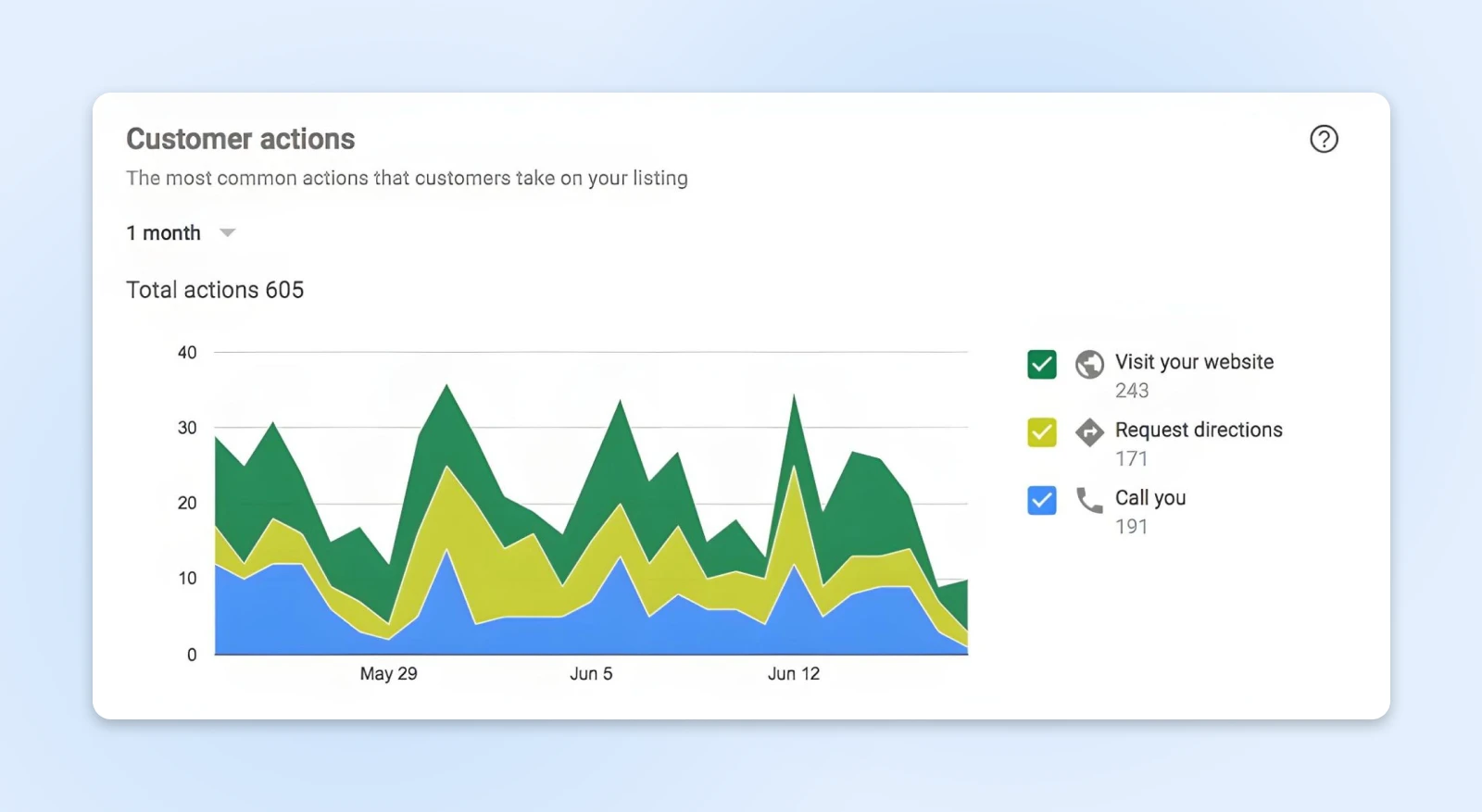
It helps you track calls, website clicks, requests for directions, and message requests by location. You also need to pay special attention to which service areas generate the most engagement as this can help you adjust your marketing strategy accordingly.
Google Analytics with Geographic Segmentation
Set up Google Analytics with geographic filters to track:
- Traffic from your service areas
- Conversion rates by location
- Engagement metrics for each service area page
Local Keyword Rankings
Monitor how you rank for “[service] in [location]” keywords across all your service areas.
Pay special attention to variations with “near me” and “best” modifiers, which indicate high commercial intent.
Because the top three search results get the most clicks, optimizing for them is key.
Your Action Plan for Implementing Local SEO
Putting all these strategies into action may seem overwhelming. Start with these high-impact actions:
Achieve Local SEO Success Without a Storefront
Congrats! You’ve just armed yourself with the SEO strategies that successful service businesses use to dominate local search results.
The path is clear. The tools for driving traffic to your website are in your hands. Your target customers are already searching. And now, you know exactly how to appear in those searches.
But here’s the thing: local SEO works, but it requires consistent effort. These strategies take time to show results.
And between running your business, serving clients, and occasionally sleeping, finding time to optimize Google listings, create location-specific content, and manage citations across 57 different directories might feel like herding digital cats.
What if your business could dominate search while you focus on your business? With DreamHost SEO services, you can!

Pro Services – SEO Marketing
Search Engine Optimization Made Easy
We take the guesswork (and actual work) out of growing your website traffic with SEO.
Learn More
This page contains affiliate links. This means we may earn a commission if you purchase services through our link without any extra cost to you.


